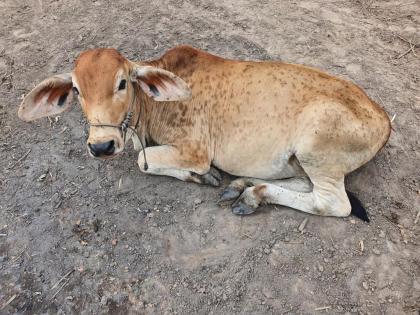Maharashtra begins vaccination drive against Lumpy Skin disease
By Lokmat English Desk | Published: September 13, 2022 03:56 PM2022-09-13T15:56:18+5:302022-09-13T15:56:39+5:30
The Maharashtra government has started the vaccination drive against the Lumpy Skin Disease virus amid death of 43 animals ...

Maharashtra begins vaccination drive against Lumpy Skin disease
The Maharashtra government has started the vaccination drive against the Lumpy Skin Disease virus amid death of 43 animals in 21 districts due to the deadly virus. Lumpy skin disease continues to spread fatally across the country and according to the data of the Central Government, 67000 animals have perished due to the deadly virus.A rise in the cases also prompted the government to start a vaccination drive. Currently, the ‘goat-pox’ vaccine is administered to animals. The vaccine is said to be 100% effective against lumpy skin disease.
A total of 42 infected cattle have died due to Lumpy Skin Disease in different districts of Maharashtra including 17 in Jalgaon, 13 in Ahmednagar, 1 in Dhule, 1 in Akola, 3 in Pune, 3 in Buldhana, 3 in Amravati and 1 in Washim till Sunday, according to the department.The first case of Lumpy Skin Disease was reported on August 4 in Chinawal village of Raver taluka of Jalgaon district.The virus has been found only in cows and buffaloes. There is no danger to humans in using milk of animals that do not have the symptoms of the disease. Animals can be cured of the disease, however, the milk of such animals may get affected due to the virus.The infected cattle with Lumpy Skin Disease have been noticed in a total of 280 villages of Jalgaon, Ahmednagar, Akola, Dhule, Pune, Latur, Aurangabad, Beed, Satara, Buldana, Amravati, Osmanabad, Kolhapur, Sangli, Yeotmal, Parbhani, Solapur, Washim, Nashik and Jalna till Sunday. As per reports, lumpy skin disease is a viral disease that affects cattle. It is transmitted by blood-feeding insects, such as certain species of flies and mosquitoes, or ticks. It causes fever and nodules on the skin and can lead to the death of the cattle.
Open in app